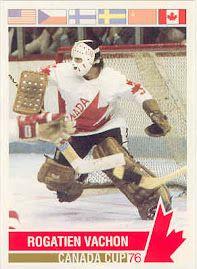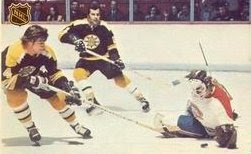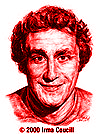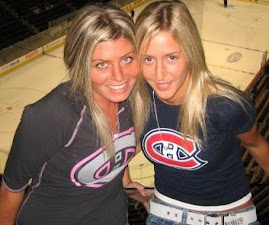 The formerly top ranked Canadiens powerplay has gone AWOL, and rectifying it is a top priority for the team in trying to get back on track and refind it's consistent winning ways.
The formerly top ranked Canadiens powerplay has gone AWOL, and rectifying it is a top priority for the team in trying to get back on track and refind it's consistent winning ways. The Canadiens PP currently sits 25th in the NHL, having counted on only 12 of 82 opportunities thus far for a conversion ratio of 14.6%. Only the Blue Jackets, Coyotes, Panthers, Devils, and Islanders are faring worse.
In assessing what is not working at present, it is important to understand the reasons behind the unit's lack of success so far.
What is difficult to breakdown, is that Montreal certainly have enough offensive elements to succeed with a man advantage, at first glance. All the keys seems in place, with a nice mix of snipers, forwards strong on the puck in corner board battles, some good sized options in front of the net, and good puck movement from the point. So far, the units used have created enough chances to merit continued patience and faith, but without results both will wear thin.
In past seasons, isolating the prime ingredients for the Canadiens power play success was a simpler matter. In 2006-07, Sheldon Souray's blasts from the blue line were a constant threat. Two reasons accounted for Souray's success: no one dared get in the way of the quickly unleashed bullets, and the shot was most often highly accurate.
In 2007-08, a Souray - lite in Mark Streit manned the point, and while his shots were nowhere near Souray's in velocity, they were accurate and low, and efficiently dispensed. Streit was equally adept at moving the puck as swiftly as he shot it, and that enabled the other shooters big gains.
With either of Souray and Streit, the opposition was kept off guard and guessing due to the varying options, and that was how the Canadiens capitalized most often.
 Perhaps misunderstood most in these schemes during this time, was the role of Alex Kovalev on the right side. Other than the changing faces at the point, he is the one of two constants on the first unit. His role is essentially to quarterback the powerplay from the right board out, and it is his work that other teams have keyed on and adjusted to most swiftly this season.
Perhaps misunderstood most in these schemes during this time, was the role of Alex Kovalev on the right side. Other than the changing faces at the point, he is the one of two constants on the first unit. His role is essentially to quarterback the powerplay from the right board out, and it is his work that other teams have keyed on and adjusted to most swiftly this season. Earlier in the season, the Canadiens sought to employ it's other first unit constant, Andrei Markov, in much the same manner as Streit was worked last year. By moving Markov over to Kovalev's side of the ice, they figured to capalize on the swift passing between the two to keep the puck in constant motion. Unfortunately for Montreal, Markov was not as comfortable on the opposite side, and his shots at the nets are neither as hard, swift or as accurate as the former foils who played there.
By focusing on Kovalev - essentially double teaming him - the opposition has rammed a spike into the Canadiens power play gears. Truthfully, this is not a new challenge. It began late last season, and became more exposed as the playoffs wore on.
As other teams improved their penalty killing against the Canadiens, they also became less fearful of taking penalties, and thus imposed a more physical standard against the Habs five on five.
 What other teams do on the penalty kill is quite basic: they position their four point box openly to form more of a rectangle, with the two closest points aimed directly at Kovalev. With limited space, Kovalev often tries to create options where there are none - flipping passes off the ice where there are no clean lanes, or skating a back and forth "S" pattern to open his end of the box and sneak a shot on goal.
What other teams do on the penalty kill is quite basic: they position their four point box openly to form more of a rectangle, with the two closest points aimed directly at Kovalev. With limited space, Kovalev often tries to create options where there are none - flipping passes off the ice where there are no clean lanes, or skating a back and forth "S" pattern to open his end of the box and sneak a shot on goal.The higher forward closest to Kovalev places his stick in the lane of the pointman, and the defenseman playing him also points his stick toward the blueline, thus negating the cross ice feeds. In this coverage, Kovalev dipsy doodles, circling over his own path in an attempt to open the slightest of spaces and lanes.
Where Kovalev becomes his own worst enemy, is when he attempts longshot plays to create movement on the opposition side. His soft flips to the point fail increasingly, because who ever is playing that position can neither one time a shot, or cradle and move the puck swiftly.
The bigger problem with Kovalev being rendered straightjacketed on the power play, is that it stagnates the four players teamed with him. The forward at the opposite side of the ice, the left wing, almost never sees the puck. The player at the net, or beside it, can only react once Kovalev has shot on goal. That player, the center, must also play the right corner, to allow Kovalev an additional pass option. The defensemen are played tightly enough, just daring Kovalev to risk a fragile pass in that direction.
What results is that the Canadiens players possess the puck for great lengths during their advantage, but the five man unit is almost as immobile as the oppositions defensive setup. When a powerplay does not keep the puck and players moving at all times, it spells disaster.

It must be pointed out that the players involved on the unit are working hard to create opportunities during the ticking seconds. This is not to say the unit isn't working misguidedly. They have tried several tinkerings on the unit to no avail, such as employing a fourth forward - be it Alex Tangauy or Sergei Kostitsyn - on the left point in order to spread out the areas from which the puck can be played, passes can be made, and shots can be taken.
The solution does not lie in the removal of Kovalev per se, but it may require the romoval of him as a focal point. Subtracting the club's most offensively gifted player from the unit is a foolish notion, but reinventing how he works during the advantage is the starting point.
To that end, Kovalev sometimes sets up on left side of the ice, facing the exact same coverage scheme. What differs in this setup, is that his cross ice feeds become less of a risk and his shots on net come from a closer range. His stick is also further away from his opponants, which means he can attempt to move to net more freely to create shots and opening. Where this plan runs into trouble is that Kovalev is not as comfortable with it, and he is still the focal point for the opposition while doing the same things that were not working at his usual space.

Where the Canadiens now stand, is in working against what the opposition regularly throws at them in terms of coverage. The secrets of how to conceal the Habs firepower have been shared league wide, and it is now up to the Canadiens to make the required adjustments to get it moving once more.
Most observers have long believed that placing a larger player in front of the goal is the way to go, but the method in which such a situation works is not always clear. A player seemingly poised on the goaltenders doorstep, screening the view and picking up rebounds is often an illusion. Such a player has to keep himself moving, either from the side of the crease into the goalie's view, or crossing the edge of the crease in order to keep defenseman busy and turning away from the puck focus.
Having a player simply stand on the goalie is akin to nullifying the advantage itself, as his coverage then falls in the hands of the netminder. The four remaining players on the offensive are then covered more tightly man to man, and the extra player the team enjoying the power play has, is now two hundred feet away in their own goal. This setup simply doesn't work as most folks perceive.

What is perhaps doing the Canadiens the biggest diservice at present is the fact that the old methods worked with ease for two plus seasons, and that breaking old habits is hard to do.
After pointing to what has ceased working on the Canadiens power play, one is left to wonder what possibly can unstagnate the efforts of the emn working it. A solution might be to decentralize the Kovalev role in it while maintaining the use of his talents.
To do this, the Canadiens would then employ Kovalev and his passing skills on the blueline. He would only shoot on net when obvious chances presented themselves. Otherwise, he would act only as a simple wheel man in rotating the puck to both sides of the ice with defense partner Markov.
Their passes would have to be brisk, and they would ideally not be holding on to it for long periods of time. They would be advised to move it often and fast in order to tire and frustrate the coverage. They would switch places along the blue line during possession to create options to skate in closer during the crossovers. To facilitate puck movement, their wingers would also be in constant motion, swinging like pendulum points from side to side.
The duo at the blueline would not be played as tightly as Kovalev was by himself before, as it would open all kinds of room nearer to the net. The wingers on both sides would then return as more viable pass and shoot options, and more movement overall would be created. All of both wingers and center could attack the net at given chances, creating more confusion for the opposition.
 What a scenario such as this could provide if properly deployed is great deal more room and movement while enjoying the advantage. The keys to any successful power play involve creating space and scoring chances by maintaining puck possession options while moving it fluidly to cause confusion and kaos.
What a scenario such as this could provide if properly deployed is great deal more room and movement while enjoying the advantage. The keys to any successful power play involve creating space and scoring chances by maintaining puck possession options while moving it fluidly to cause confusion and kaos.The idea of Kovalev playing the point would return the fluidity to the Canadiens powerplay offense.
The puck and the space to create with it would then become more equally shared amongst the unit's participants. In essence, it would be like giving the players back the skills that have been robbed of them by having Kovalev rule the unit.
The recreation of the power play would not work overnight. Players, especially Kovalev in this instance, would have to get comfortable with the new rigors of it. For one thing, Kovalev would have to learn caution and read inopportunity more precisely. Markov and the remaining players would need time to adjust to receiving passes from angles and areas they have gotten away from. It could take as much as ten games for the unit to become comfortable. By that time it ought to be producing at a better clip that what is currently dying before everyone's eyes.
.






























































































































































6 comments:
Excellent analysis Robert! I agree this could very well be the key to unlocking this stagnating PP. Perpetual movement is really the key to creating opportunities.
Also Kovalev just might have the best shot on the team and would surely put it on net most of the time.
I would be slightly concerned with his turnovers from that position, but i guess it's worth the investment!
Excellent post Robert!
What bothers me more than anything else is the fact that we had 5 days off to work on this PP weakness of ours and what did we accomplish?
Nothing.
Changes have to be made overall on the team and not just the PP.
Great post Robert. Not only do we need to rework the PP in order to break out of our present day slump, but we also need to retool this formidable weapon to help get us through the playoffs. More of the same just won't cut it against New York, Boston, or Philly.
Good stuff Robert. The only thing i see as a liability is Kovalev's speed. If he gets pressured and opts to control the puck like he tends to do he is at risk of a turnover so Markov would definitely have to cover. Also Kovy isn't the fleetest of foot either which could make for some problems including tripping penalties as he tries to get back. Otherwise i agree with the intent. Somehow i think returning Markov to his position and maybe placing Tanguay there would be better as he can dish and is faster. Not sure but definitely something to think about.
beegee, I would worry about that aspect of Kovalev's game as well. He has the tendecy to beat dead horses when it comes to certain little tricks he tries. As I said at HIO, he needs to stop using the artists brush strokes and start painting with a roller!
Mike - no one knows what is and isn't worked on inside the team corridors. Much of what is taught via the PP and PK units is often done with video. Calling for changes at this point is a bit rash. The Canadiens have the elements, they are simply just working badly at this point. There's m any potential solution to try before losing patience.
24 Cups - you're absolutely right. If the playoffs started today, against those teams we are meat!
Geoffrey - Kovalev would have to lose some of his sense for adventure if he played the point. You are right to note his speed, or lack of it being an issue, and in pointing out that it would be important for his blueline partner to have good wheels. In this setup, Kovalev would need to read his checker with fine detail, and not blast shots into oncoming legs a la Brisebois.
I remember at the start of the year telling some of the "experts" (the ones who would let me email them, anyway ;) ) that they were full of crap, and that Kovalev and Markov were the keys to Montreal's power play, not Souray and Streit. Markov's been fine for the most part, but between the added focus on Kovalev (which I had forgotten about since last spring), and the fact that he just hasn't played very well in any of the half-dozen or so games I've seen this year, and it's little wonder the Habs' PP is suddenly in the basement.
Thank you for being a voice of sanity in the hockey world, Robert. =)
Post a Comment